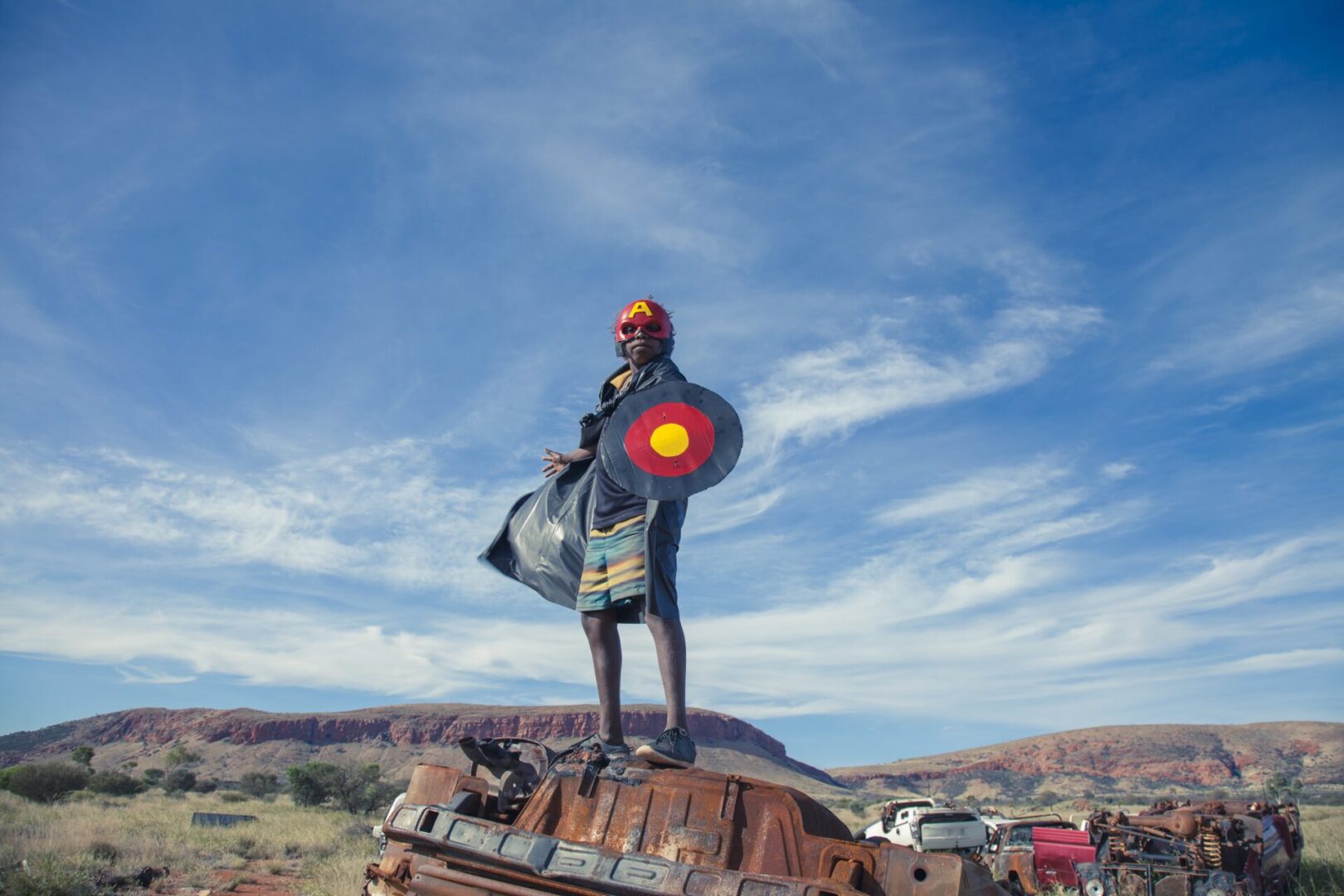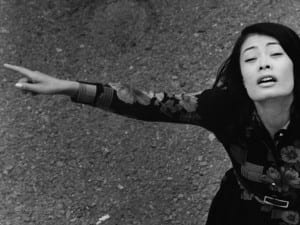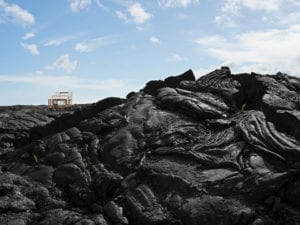On Country: Photography from Australia, one of the major exhibitions at this year’s Rencontres D’Arles, brings together artists who consider what it means to be part of Australia’s communities, culture, history and landscape. Australia’s Indigenous populations – known as First Peoples or Aboriginal Australians – have lived on the continent for more than 65,000 years. In these communities, land is an integral aspect of life, commonly believed to have been created as an extension of humanity, rather than as distinct from it. First Peoples use the term “Country” to describe the cosmos, lands, seas and waterways to which they are connected. The word represents deep Ancestral ties to a specific location, as well as how land is linked to language, family and identity. To be “on Country” is more than just being situated somewhere; it is about being shaped by that place, connected to it and having a responsibility to care for it.
The show is rooted in a complicated and fraught past, which continues to have very real impacts. European settlers reached Australia in 1788, when the First Fleet landed at Sydney Cove. At the time, there were an estimated 750,000 inhabitants on the island, comprising 400 different nations and 250 language groups. The arrival of the first colonisers marked the start of two centuries of brutality – up to 20,000 individuals died in violent conflicts, whilst others were defeated by massacres, disease and poverty. This continued into the 20th century, when children were removed from families to be placed in white homes or institutions, whilst mass incarceration disproportionately affected Indigenous groups. Today, First Peoples continue to struggle for equal rights, and in 2023, citizens overwhelmingly rejected a national referendum that would have recognised Aboriginal groups in its constitution.
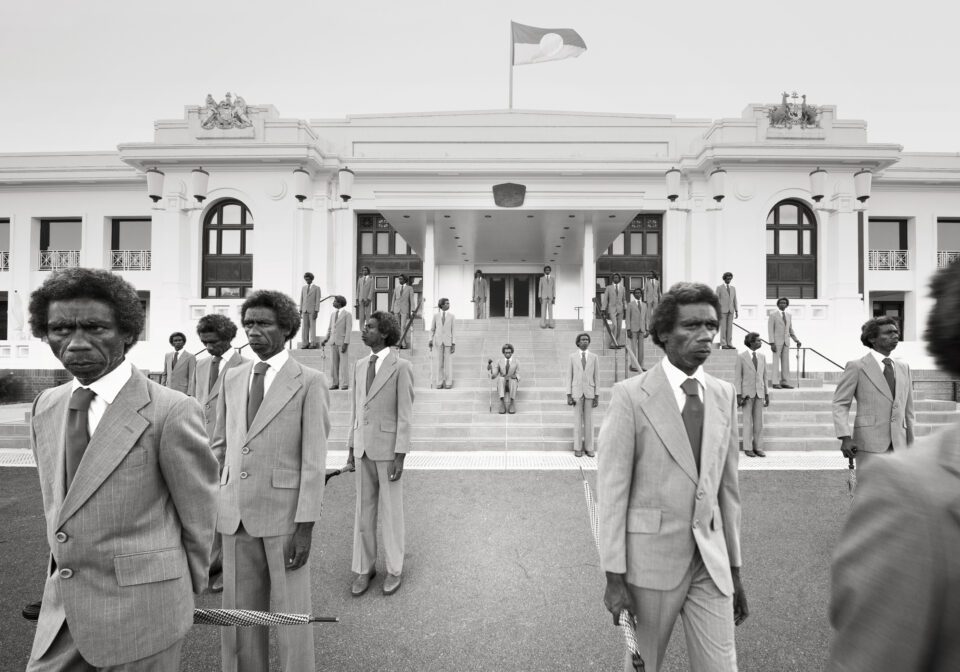
Artists featured in On Country reckon with this fraught past, navigating collective traumas and shared grief, whilst simultaneously celebrating enduring traditions. One particularly moving example is Tace Stevens, a Noongar and Spinifex visual storyteller based in Perth. In 2023, she received a grant from Magnum Foundation and the World Monument Fund to collaborate with the survivors of the Kinchela Boys Home. The state-run establishment forcibly separated hundreds of boys from their families between 1924 and 1970, in what became known as the Stolen Generation. The result is We Were Just Little Boys (2023), a haunting body of work that captures how the now elderly men, known as Uncles, were once vulnerable children, whose trust was betrayed by those in authority. The artist writes: “This body of work is a reclamation of their truth. People today have mixed information about the Stolen Generations. Some believe it didn’t happen, others think it was a good thing, while some believe it happened many generations ago. Within this series, the Uncles confront the camera, and by extension us, to share their truth.”
Stevens is not the only one encouraging viewers to reconcile with difficult realities. Ricky Maynard is best known for portraits of elders from the western Cape York Peninsula of northern Queensland, taking images that capture their respected position in society and document their experiences throughout the latter years of the 20th century, which often involve deeply traumatic or harmful memories. Meanwhile, Brenda L Croft uses digital media to layer photographs and text, creating images that explore autobiographical subject matter. Her two complementary series, In My Mother’s Garden (1998) and In My Father’s House (1998), use family snapshots, religious imagery and language to consider Croft’s childhood with a white mother and an Aboriginal father, who was stolen from his home at the age of two.
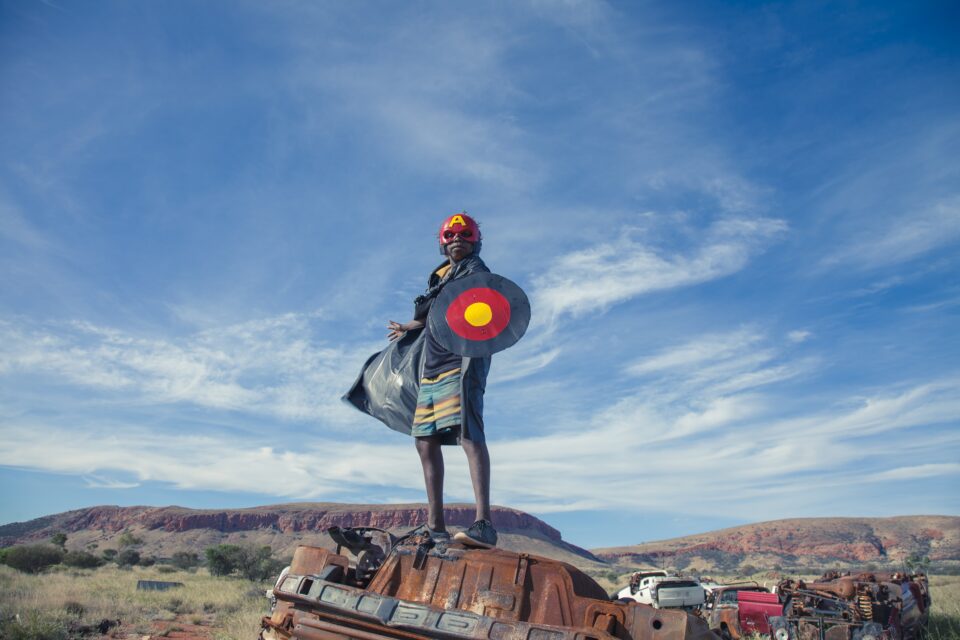
On Country also makes space for moments of celebration, foregrounding works that honour and revive Indigenous art practices. Tony Albert is one of Australia’s foremost contemporary artists, with a longstanding interest in the misrepresentation of First Peoples. He considers how optimism can be harnessed to overcome adversity. The multi-media pieces incorporate what Albert describes as “Aboriginalia” – kitsch figurines and household objects, common throughout the late 20th century, that appropriated, caricatured and misused tradition. These pieces pose crucial questions about how we remember, give justice to, and rewrite complex and traumatic histories. Elsewhere, Maree Clarke has dedicated her career to the research of practices that were lost due to colonisation. Her wide-ranging oeuvre includes eel traps; kopis, which is a mourning cap made from clay and worn mostly by women after the death of a loved one; and kangaroo tooth necklaces.
On Country: Photography from Australia presents artists who connect to Country in dynamic ways. The practitioners embrace the camera as a medium for truth-telling, self-determination and collaboration, acknowledging the past and suggesting possible futures. This exhibition is an act of reclamation – both of pasts and cultures that have been hidden from view, and of art.
On Country: Photography from Australia sis at Église Sainte-Anne, Arles until 5 October: rencontres-arles.com
Words: Emma Jacob
Image Credits:
1&3. Tony Albert (Kuku Yalanji), David Charles Collins and Kirian Lawson. Warakurna Superheroes #1, Warakurna Superheroes series, 2017. Courtesy of the artists / Sullivan+Strumpf.
2. Michael Cook (Bidjara). Majority Rule (Parliament), Majority Rule series, 2014. Courtesy of the artist / Jan Murphy Gallery.


